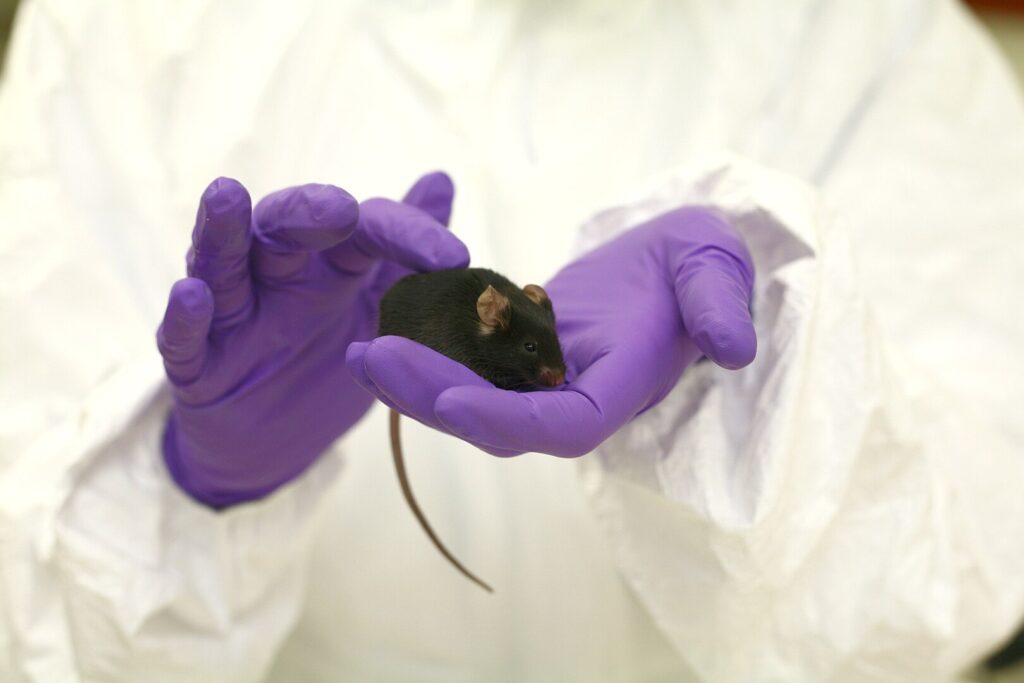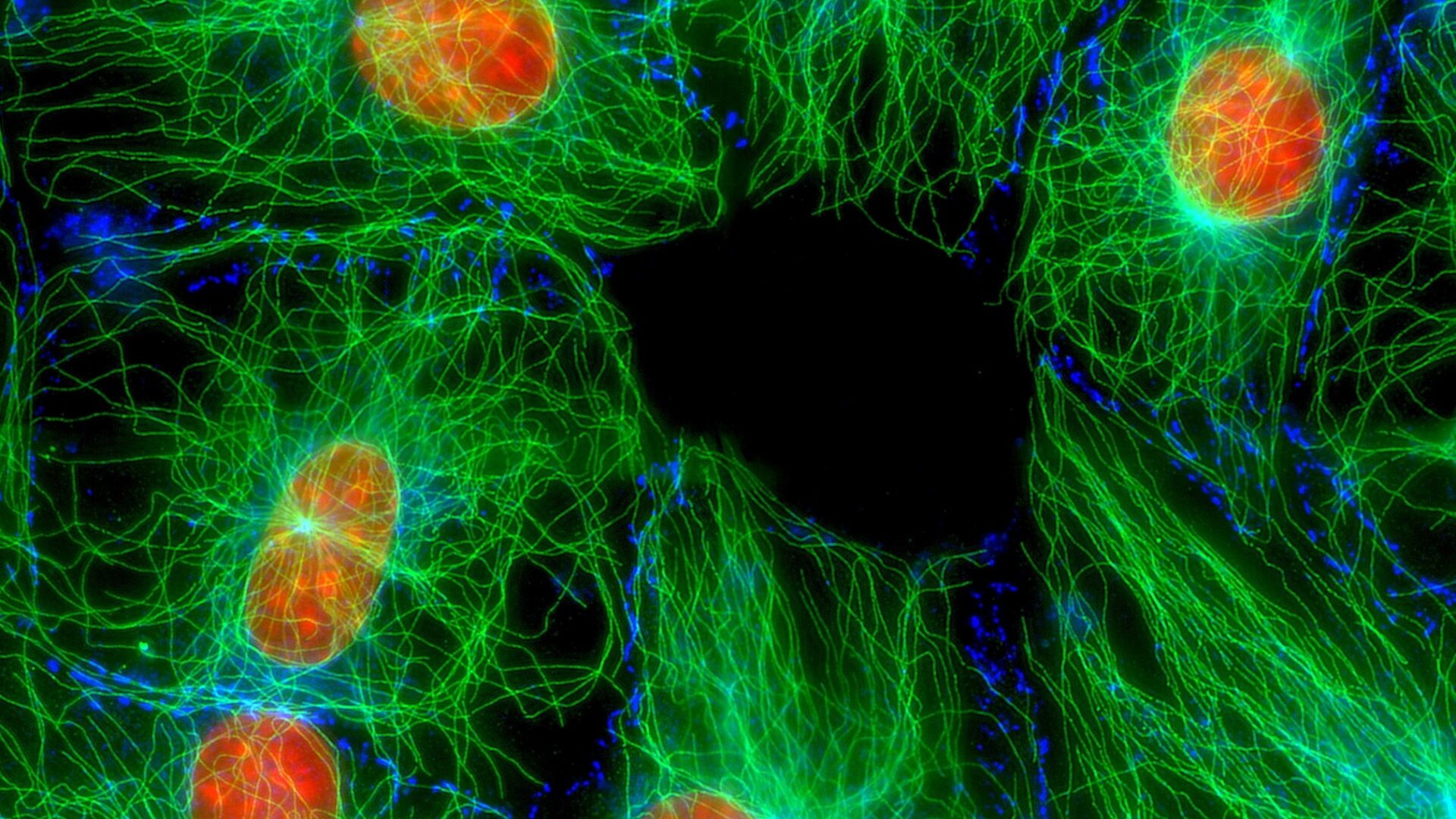A new study reveals there may be the potential in a cocktail of chemicals to reverse and prevent the aging, and death, of cells.
This web page was produced as an assignment for an undergraduate course at Davidson College.
Of all the worldly secrets which humans have sought to uncover throughout history, the secret to immortality has by no means been neglected. In fact, fortunes have been spent nearly every century looking for its key. Even just a taste would do for many; better health, greater longevity, prolonged youth. Though modern scientists may scoff at the notion of the search for immortality, they too have likely foraged for one of these lower hanging fruit. Indeed, it’s only in the last one hundred years that eugenics, the benighted chase for ‘betterment’ of the human race, has begun to subside as a biological, political, and philosophical practice. So, what do modern scientists look for given this context, and what, if any, are the social and ethical implications of their research?
In the past decades there has been no lack of research done into the process of aging, and how humans might reverse or prevent it, specifically at the cellular level. One promising possibility has involved injection of Yamanaka factors, small molecules which can change how a cell’s genes are expressed (Aguirre et al,. 2023). But this method has its advantages and disadvantages. The first can be both simultaneously: these factors have the ability to induce an undifferentiated state in cells, commonly referred to as a stem cell. This means that these cells can be reprogrammed to become a different type of cell or the same cell but rejuvenated. While this may sound positive, a drawback of this feature is the increased risk of developing cancer associated with it. This method can also be hard to implement in living organisms, and has low efficiency rates.
In response to this unsatisfactory solution, another method of inducing cell rejuvenation has become increasingly researched: the chemical cocktail. This solution involves injecting cells with various combinations of chemicals… and… well… reducing their biological age and mortality rates. A problem with this method however, is that there is not yet much known about it’s potential use in living organisms, and this is because scientists aren’t quite sure how or why it works. Only that it does work. In response to this gap in knowledge, a recent study conducted by Mitchell et al, has sought to answer what exactly is going on in cells treated with these cocktails, and why they don’t age normally (Mitchell et al,. 2024).

This study specifically chose to look at the cocktail’s effects on fibroblast (connective tissue) cells from the ears and tails of mice. These cells were collected from the tissues of young (4-months) and old (20-months) euthanized mice and treated with the two chemical cocktails this study focuses on, known as 7c and 2c. While in the past many studies have only looked at the genetic or protein factors which may be affected by these chemicals, the current study was much more thorough. They looked at not only the effects of the cocktails on the genetics and proteins of the cells, but also how much and when the genes were expressed, how well the proteins were able to function, and what kind of precursor and waste molecules were present throughout the cells lifetime. Surveying at these different levels of information allowed the researchers to present many important findings in terms of the chemical cocktails effects on cell aging.
It has been a recorded phenomena that as cells age, their respiration and membrane potential decline. These terms have to do with how the cell is able to create and manage it’s energy. Cellular respiration is the process by which a cell converts sugars into energy: something it needs to do in order to survive. The membrane potential of a cell comes from the accumulation of charged ions inside and outside of the cell, but all you need to know is that its important because it drives cellular respiration; kind of like a water wheel drives the turn of a grind stone for making grains. You can see why the decrease of cellular respiration and membrane potential then relates to the processes of aging and cell death. This study found that with the injection of the 7c and 2c chemical cocktails, these processes were stopped or even reversed. In the future, the authors note that more research still needs to be done on the specific molecular mechanisms that produce these effects.
Despite how much more research there is to go on this topic, these revelations are likely very exciting for the scientists studying them, and equally so for those seeking a cure to their aging. So, we’re back to the moral question again. Is it ethical for people to be able to prolong their life for potential life times, if not indefinitely? On a surface level, it doesn’t seem so wrong: people are constantly looking for ways to live longer and stay healthier. Whether that’s eating breakfast, doing yoga, or going for a morning run, there are lots of ways to improve one’s odds at increased longevity. And there’s nothing wrong with this. But, what’s important to realize is that we do not live in a perfect world, and these are not equal opportunity habits. People who work night shifts, 80 hour a week jobs, or suffer from food insecurity often do not have the opportunity to partake in these luxuries. And in a world where eating three meals a day is statistically a luxury only afforded by the few, what kind of divinity would a treatment like this require, or provide? When considering these ethical implications, it becomes more than clear that the power to live hundreds of years, or even fifty more than usual, would be an incredibly classed privilege. But with that said, it is unlikely that this preliminary research will lead to that kind of future any time soon. For now, there are more quantifiable possibilities in the treatments of cancer and other diseases, which though not without their own set of ethical dilemmas, are far from a dystopian nightmare.
Aguirre, M., Escobar, M., Forero Amézquita, S., Cubillos, D., Rincón, C., Vanegas, P., Tarazona, M. P., Atuesta Escobar, S., Blanco, J. C., & Celis, L. G. (2023). Application of the Yamanaka Transcription Factors Oct4, Sox2, Klf4, and c-Myc from the Laboratory to the Clinic. Genes, 14(9), 1697. https://doi.org/10.3390/genes14091697
Mitchell Wayne, Goeminne Ludger J.E., Tyshkovskiy Alexander, Zhang Sirui, Chen Julie Y., Paulo Joao A., Pierce Kerry A., Choy Angelina H., Clish Clary B., Gygi Steven P., Gladyshev Vadim N. (2023) Multi-omics characterization of partial chemical reprogramming reveals evidence of cell rejuvenation eLife 12:RP90579 https://doi.org/10.7554/eLife.90579.2
Rory Mullis, Class of 2026, romullis@davidson.edu
© Copyright 2022 Department of Biology, Davidson College, Davidson, NC 28036.

Great work Rory! This post is extremely well-written and easy to follow. I especially liked the analogy you brought in about water wheels. It’s astonishing that scientists have developed chemical cocktails that can reverse some of the effects of aging. As you mentioned, this research is quite preliminary, but I’m curious to see how far it will progress and who will invest in it. While the potential for this sector of research is fascinating I think there are more pressing areas of study that need to be invested into. A normal life expectancy is a luxury for many individuals worldwide due to disease and health conditions. Not to mention surrounding environmental, social, and political factors. Therefore, investing money and research efforts towards these current health disparities, such as finding cures or more affordable treatments for diseases/health conditions, is necessary. And, as you mentioned, the future of the “reversing age” field will only further the class divide that already exists in health care.
Hey Rory, I found your summary so interesting! I liked how you mentioned that there was no lack of research done in aging which I agree with. I feel like current society cares and worries so much about aging. This study definitely touches topics with how ethical it should be to reverse aging or even stop it. I really liked how you brought up real world problems, and how this essentially will benefit people in the upper class. I think instead of focusing on aging we should put our emphasis on current problems.
Hey Rory! Your article was very interesting! It highlights the complexities of studying issues relating to morality. I really liked how you broke down and explained the topics! I think this topic is one with a lot of ethical & social concerns and you display these concerns perfectly! If a cocktail that does reverse aging is created, I wonder what the availability will be for the average person. It will be interesting for research to be done on whether it is possible to “stop” aging at a certain age rather than reverse it.